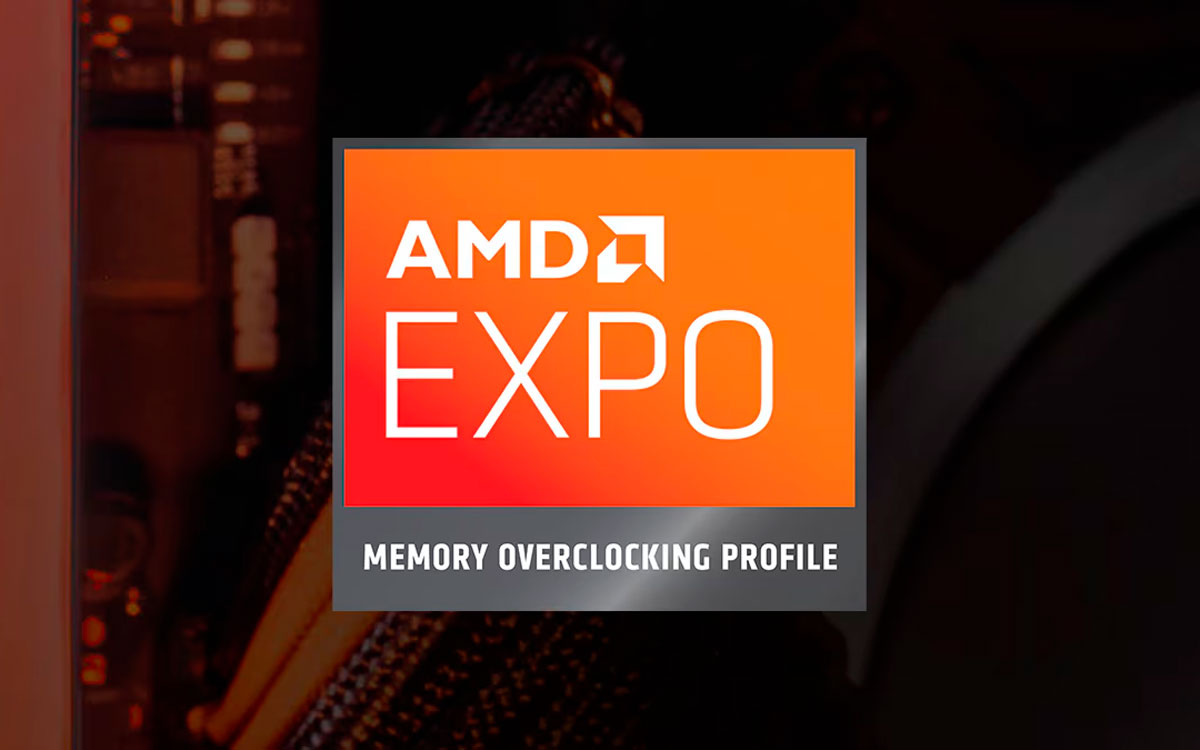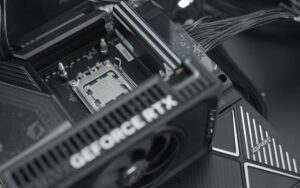
When AMD debuted its new Ryzen 7000 CPUs, it also brought along the AMD EXPO (Extended Profiles for Overclocking), an innovative technology designed to optimize the performance of DDR5 memories in systems equipped with AMD processors.
In this article, understand what it is, how it works and how to enable the AMD EXPO.
Introducing AMD EXPO and how to activate it
Released on September 27, 2022, the memory overclocking (OC) profile AMD EXPO arrives alongside the line of Ryzen 7000 processors and the new AMD DDR5 memories, in which they were inserted. EXPO technology came to replace previous memory OC solutions such as EOCP (Extend Overclock Profiles) da Gigabyte e DOCP (Direct Overclock Profile) from ASUS, both were inserted directly into the motherboard.
Basically, the AMD EXPO serves the same function as the Intel XMP was developed to offer a model with pre-defined memory configurations, optimized to operate at clock speeds higher than the standard frequencies established by the JEDEC, a company responsible for the standardization of semiconductor devices. This customization is particularly advantageous for activities that require high memory usage, such as video editing, 3D rendering and gaming.
Also check out our article on Intel XMP here!
At the time, more than 15 memory kits were released with EXPO, in addition to the announcement that the standard will be free of royalties and licensing fees, giving more encouragement to encourage other memory manufacturers to use the profile and facilitate the entire OC process.
O AMD EXPO changes the main characteristics, the timings, which are:
CAS# Latency (tCL): This is the time it takes for memory to access a specific column of data within a module. It is one of the most important timings and is usually indicated as a number such as CL16, CL18, etc.
RAS# to CAS# Delay (tRCD): This timing specifies the time required for memory to access a row of data after having accessed the column (CAS). It is measured in clock cycles.
Row Precharge Time (tRP): Sets the time required to close a row of data before another row can be opened for access.
RAS# Active Time (tRAS): This timing determines how long a data line remains active before being closed (pre-charged). It is measured in clock cycles.
Command Rate (CR): Indicates the number of clock cycles required for the memory to respond to a read or write request. It can usually be 1T or 2T, where 1T is faster.

Activating EXPO
Of course, for those who are not familiar with the process, performing an OC is an activity that requires care, as it involves critical adjustments to the functioning of the PC. Typically, these changes require a series of tests, with trial and error, and can cause confusion when certain settings work in certain applications, but fail in others.
First of all, it is important to check your motherboard’s compatibility with the memory profile and test system stability before and after enabling EXPO.
To activate the AMD EXPO, it is necessary to access the system BIOS during startup, there the user must look for the memory settings section and select the desired EXPO profile. This process is generally simple and can be done in just a few clicks, depending on the BIOS interface provided by the motherboard manufacturer.
By enabling an EXPO profile, the user can increase memory frequency and adjust latencies to achieve higher transfer rates and faster response times.
For those who have never made changes to memories, we have a video on the channel giving an excellent tutorial (start 14 minutes):
Now, let’s learn about the pros and cons of owning memories with EXPO!
Pros of AMD EXPO:
- Enhanced Performance: Enabling EXPO profiles can result in a significant increase in performance for games and applications that benefit from higher memory transfer rates.
- Simplicity: EXPO technology simplifies the OC process, making it accessible even to less experienced users.
- Stability: Profiles are tested and validated to ensure stability, reducing the risk of OC-related issues.
Cons of AMD EXPO:
- Limited Compatibility: EXPO technology is designed to work with DDR5 memory and AMD Ryzen processors on socket AM5, which may limit its applicability in older systems.
- Heating Potential: Like any form of OC, EXPO activation can lead to an increase in operating temperature, which may require more robust cooling solutions.
- Guarantee: OC, even when facilitated by EXPO technology, can potentially void the warranty on some components if not done within manufacturer guidelines.
- Initialization: Just like XMP, the profile does not start up for the first time with the maximum settings alone, which can harm those who are more inattentive and inexperienced in carrying out this activation.
Conclusion
In summary, the AMD EXPO is a promising technology for hardware enthusiasts and gamers looking to get the most out of their systems. With its ease of activation and promise of improved performance, it represents a significant step forward in PC customization and optimization.
However, it is important to consider potential challenges, such as the need for compatibility and thermal considerations, before venturing into the world of memory OC. For more detailed information about the technology AMD EXPOyou can visit AMD’s official website or check out reviews and tutorials available online.
Credits: AMD Expo: this is the new technology for overclocking RAM memory – What are XMP and EXPO profiles and how can I use them?

Join the Adrenaline Offers Group
Check out the main offers on hardware, components and other electronics that we found online. Video card, motherboard, RAM memory and everything you need to build your PC. By joining our group, you receive daily promotions and have early access to discount coupons.
Join the group and take advantage of promotions
Source: https://www.adrenaline.com.br/hardware/amd-expo-o-que-e-como-configurar/


